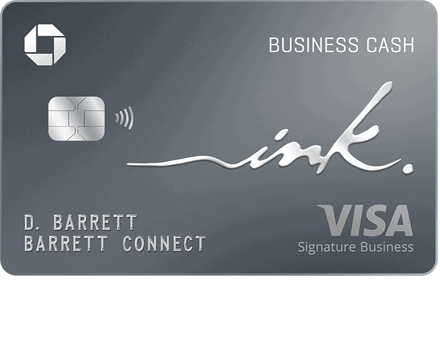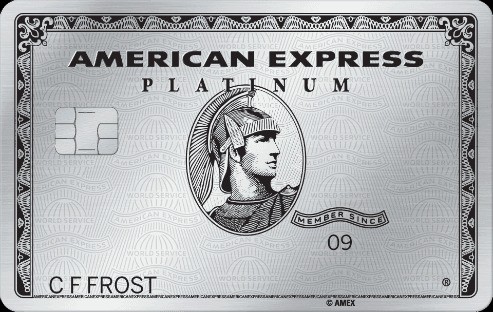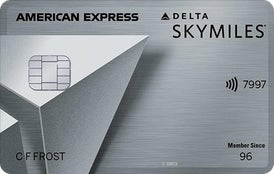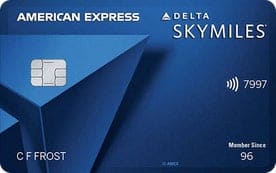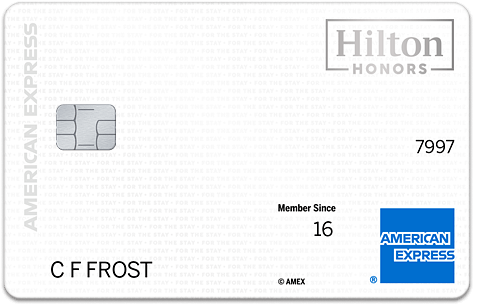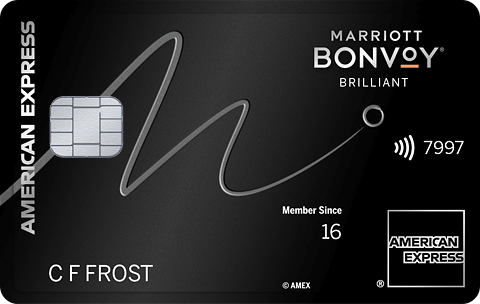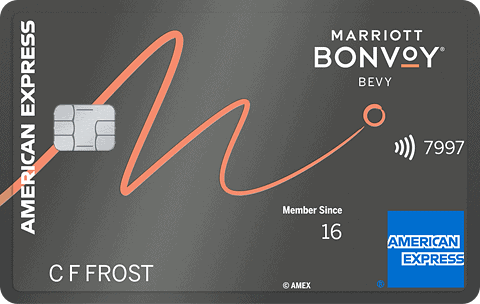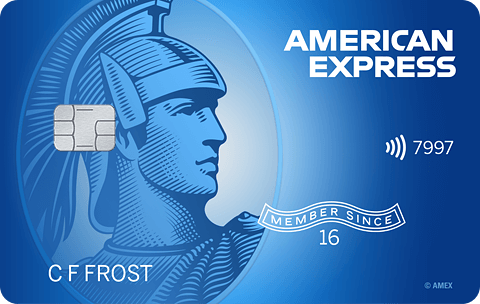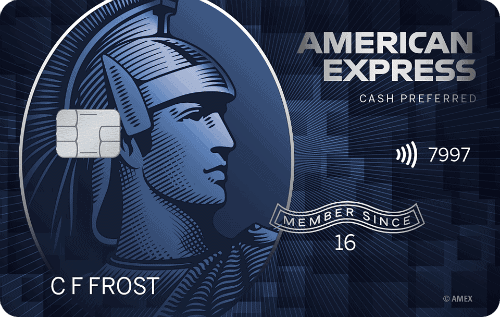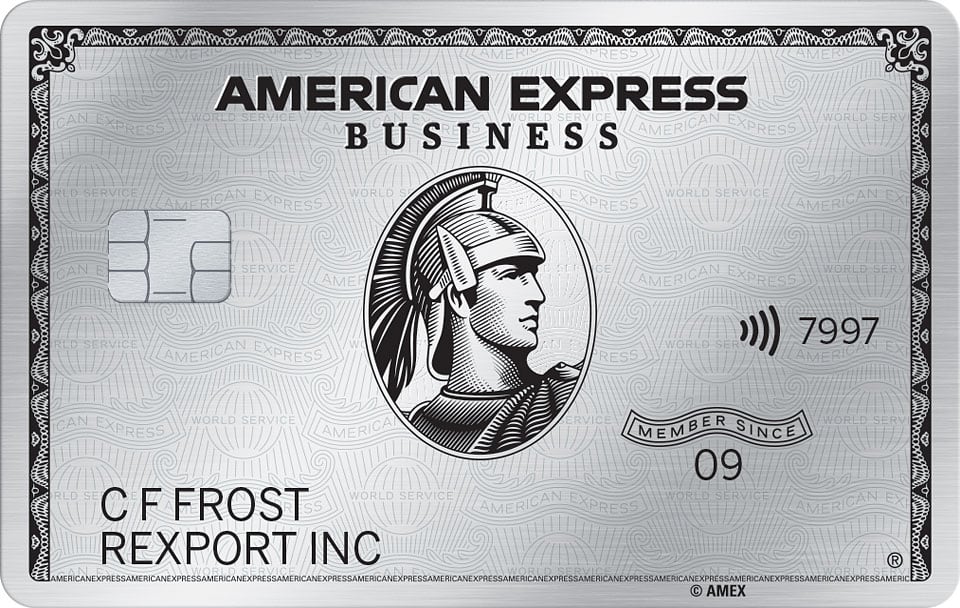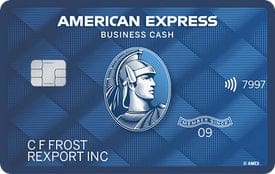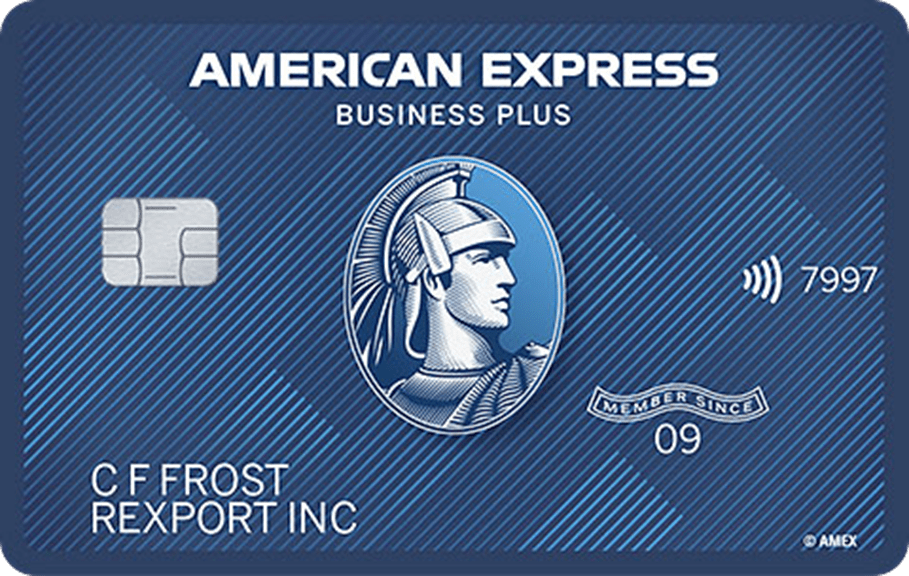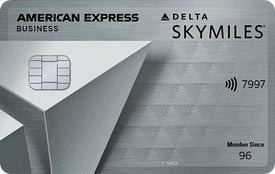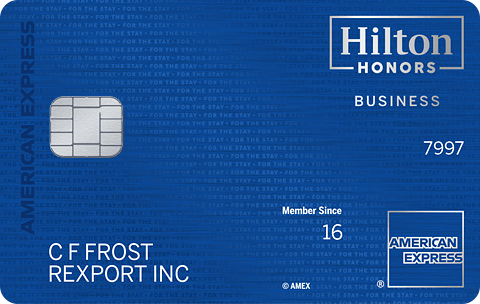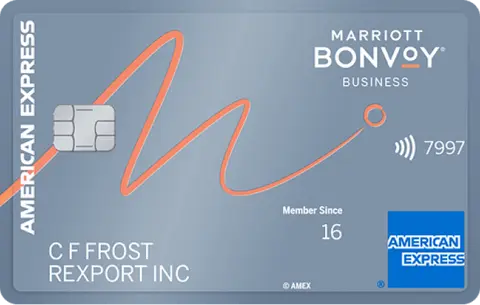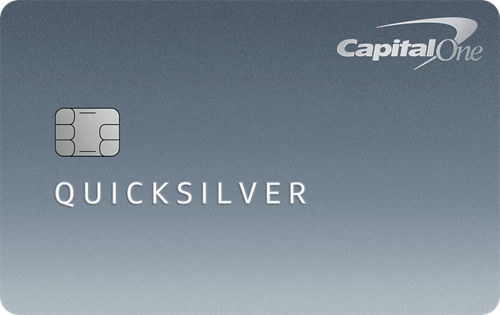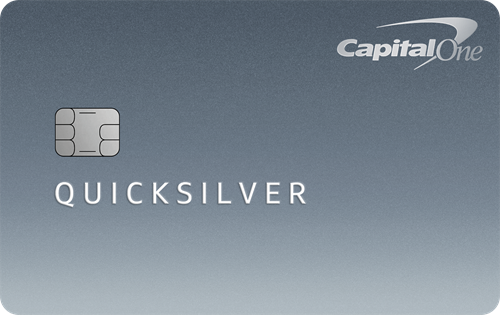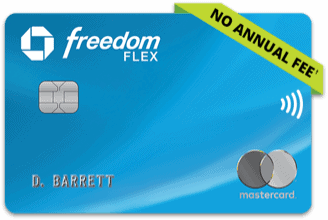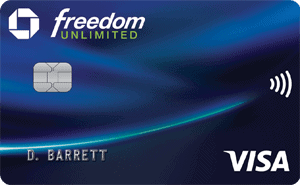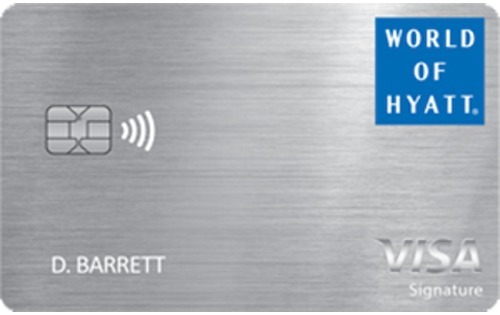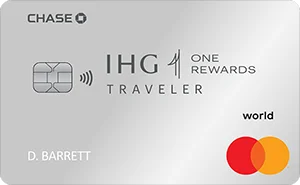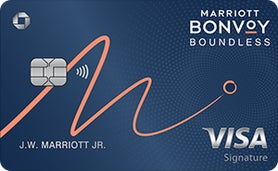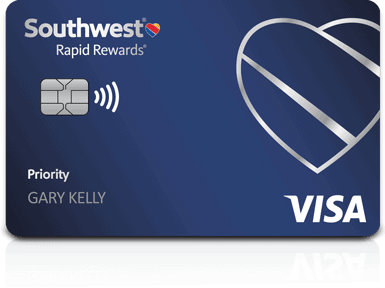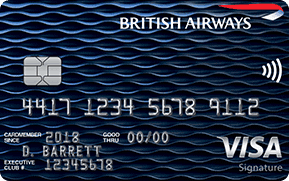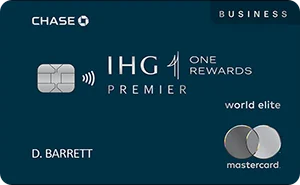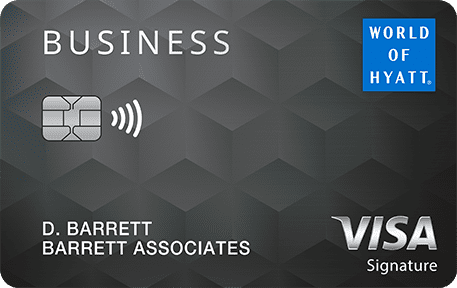
Our Favorites
Like the Ink Business Cash® Credit Card, the Ink Business Unlimited comes with a welcome bonus that is marketed as “cash back”. These points can be used for higher value travel redemptions if you have another Chase Ultimate Rewards card.
1.5%
Earn unlimited 1.5% cash back on every purchase
Chase Sapphire Preferred is our top choice because of its amazing signup bonus, reasonable annual fee, and the amazing value of the points it earns. If you're looking for your first travel credit card look no further than Chase Sapphire Preferred.
Enjoy new benefits such as a $50 annual Chase Travel℠ Hotel Credit, 5X points on travel purchased through Chase Travel℠, 3x on dining, select streaming services and online groceries and 2X points on all other travel purchases, plus more.
5x
Earn 5x on travel purchased through Chase TravelSM.
3x
Earn 3x on dining, select streaming services and online groceries.
2x
Earn 2x on all other travel purchases.
1x
Earn 1x on all other purchases.
Chase Sapphire Reserve is widely regarded as the best premium travel credit card on the market. The annual fee is steep, but the benefits of this card are fantastic. Remember that the card comes with a $300 annual travel credit, which makes the fee much easier to justify.
Earn 8x points on all purchases through Chase TravelSM, including The EditSM and 4x points on flights and hotels booked direct. Plus, earn 3x points on dining worldwide & 1x points on all other purchases
8x
Earn 8x points on all purchases through Chase TravelSM, including The EditSM.
4x
Earn 4x points on flights and hotels booked direct.
3x
Earn 3x points on dining worldwide.
1x
Earn 1x points on all other purchases.
Ink Business Cash comes with a signup bonus that is marketed as “cash back”. Note that if you have another Chase Ultimate Rewards card you can combine these points to be used for travel.
5%
Earn 5% cash back on the first $25,000 spent in combined purchases at office supply stores and on internet, cable and phone services each account anniversary year.
2%
Earn 2% cash back on the first $25,000 spent in combined purchases at gas stations and restaurants each account anniversary year.
1%
Earn 1% cash back on all other purchases, with no limit on how much you can earn
Chase Ink Business Preferred® Credit Card earns the exact same Chase Ultimate Rewards points as the Chase Sapphire Preferred® Card and the Chase Sapphire Reserve®. It comes with a substantial bonus, the highest of all the UR cards. Ink Preferred is a business card, but you don’t need to own a “traditional business” to qualify for the card.
3x
Earn 3 points per $1 on the first $150,000 spent in combined purchases on travel, shipping purchases, Internet, cable and phone services, and on advertising purchases made with social media sites and search engines each account anniversary year.
1x
Earn 1 point per $1 on all other purchases, with no limit.
There’s a lot to love about the Capital One Venture X Rewards Credit Card. Sure, it might be a glorified Capital One Venture Card, but it has some compelling credits to help justify it over its little brother.
10x
On hotels and rental cars booked through Capital One Travel
5x
On flights and vacation rentals booked through Capital One Travel
2x
On all other purchases
American Express
American Express Personal Cards
Annual Fee: $695
Rates & FeesThe Platinum Card by American Express has been a staple in the points/miles world for a very long time. Recently updated to an annual fee of $695, It comes with up $200 airline fee credits, up to $200 annual hotel credits, up to $199 CLEAR® Plus, up to $300 Equinox Credit, monthly digital entertainment credits, lounge access, and a handful of other premium perks.
5x
Earn 5X Membership Rewards® Points for flights booked directly with airlines or with American Express Travel®® on up to $500,000 on these purchases per calendar year. 1x thereafter.
5x
5X Membership Rewards® Points on prepaid hotels booked on amextravel.com.
1x
Earn 1x Membership Rewards® Points on all other purchases.
Annual Fee: $325
Rates & FeesThe American Express® Gold Card is widely known as having some of the best spending category bonuses of any card on the market. This card has a reasonable annual fee, great bonus, and plenty of perks that are valuable to just about anyone.
4x
at restaurants worldwide, on up to $50,000 in purchases per calendar year, then 1x
4x
at U.S. Supermarkets, on up to $25,000 per calendar year in purchases, then 1x.
3x
for flights booked directly with airlines or on amextravel.com.
1x
on all other eligible purchases.
Annual Fee: $650
Rates & FeesThis is the premium Delta co-brand card for serious Delta customers. The ability to earn MQMs with credit card spend is a nice perk for big spenders.
3x
Earn 3X Miles on Delta purchases.
1x
Earn 1X Mile on all other eligible purchases.
Annual Fee: $350
Rates & FeesThe premium card option for travelers who frequently fly Delta. This card also offers a companion certificate, good for select flights on Delta, after each year you renew the card
3x
Earn 3X Miles on Delta purchases and purchases made directly with hotels.
2x
Earn 2X Miles at restaurants worldwide, including takeout and delivery in the U.S. and at U.S. supermarkets.
1x
Earn 1X Miles on all other eligible purchases.
Annual Fee: $150
Rates & FeesThis is perhaps the most popular card among loyal Delta customers thanks to the free checked bag benefit and reasonable annual fee. Overall a very typical airline co-brand credit card.
2x
Earn 2x miles on Delta purchases
2x
Earn 2x miles on restaurant purchases worldwide and at US supermarkets
1x
Earn 1x miles back on all other eligible purchases
This is the no-fee version of Delta's co-brand cards with American Express. Fewer perks and a lower bonus but a good option for anyone who is not looking to pay an annual fee on a card.
2x
Earn 2x miles on Delta purchases
2x
Earn 2x miles on at restaurants worldwide, plus takeout and delivery in the U.S.
1x
Earn 1x miles back on all other purchases
Annual Fee: $150
Rates & FeesOverall this card is great when compared to other Hilton offers but in the middle of the pack in the world of hotel cards. Remember, these are Hilton points we are talking about so don’t get too excited by the large number. Most consider Hilton points to be worth about 0.5 cents per point.
12x
Earn 12X Hilton Honors Bonus Points for each dollar of eligible purchases charged on your Card directly with a hotel or resort within the Hilton portfolio
6x
Earn 6X Points for each dollar of eligible purchases on your Card at U.S. restaurants, U.S. supermarkets, and U.S. gas stations
4X
Earn 4X Points for each dollar on U.S. Online Retail Purchases.
3x
Earn 3X Points for all other eligible purchases on your Card.
Overall this card is decent when compared to other Hilton offers but in the middle of the pack in the world of hotel cards. Remember, these are Hilton points we are talking about so don’t get too excited by the large number. Most consider Hilton points to be worth about 0.5 cents per point.
7x
Earn 7X Hilton Honors Bonus Points for each dollar of eligible purchases charged on your Card directly with hotels and resorts within the Hilton portfolio.
5x
Earn 5X Points per dollar on purchases at U.S. restaurants, at U.S. supermarkets, and at U.S. gas stations.
3x
Earn 3X Points for all other eligible purchases on your Card.
Annual Fee: $650
Rates & FeesThis is the most premium card in the Marriott family, coming with a $650 fee but plenty of perks to justify it. Earn 6x points at Marriott, 3x on worldwide restaurants and flights booked directly with airlines, 2x on everything else.
Also comes with an annual free night award every year after your Card renewal month, good at or under 85,000 Marriott Bonvoy points, each card renewal year. The card also has the $300 Brilliant Dining Credit. Each calendar year, get up to $300 (up to $25 per month) for eligible purchases made on the Marriott Bonvoy Brilliant Card at restaurants worldwide.
6x
Earn 6X Marriott Bonvoy points for each dollar of eligible purchases at hotels participating in Marriott Bonvoy® program.
3x
Earn 3X points at restaurants worldwide and on flights booked directly with airlines.
2x
Earn 2X points on all other eligible purchases.
Annual Fee: $250
Rates & FeesThis mid-tier Marriott Bonvoy credit card is great if you're a Marriott loyalist, but don't spend enough to justify the steep annual fee of it's big brother, the Marriott Bonvoy Brilliant® American Express® Card.
6x
Earn 6X Marriott Bonvoy® points for each dollar of eligible purchases at hotels participating in Marriott Bonvoy®.
4x
Earn 4X points at restaurants worldwide and U.S. supermarkets (on up to $15,000 in combined purchases at restaurants and U.S. supermarkets per calendar year, then 2X points).
2x
Earn 2X points on all other eligible purchases with the Marriott Bonvoy Bevy® Card.
A popular card for those who want to be rewarded for spend at U.S. supermarkets, U.S. online retail purchases, and U.S. gas station spend due to the elevated cash back on those categories and no annual fee.
3%
Earn 3% Cash Back at U.S. supermarkets (on up to $6,000 per year in purchases, then 1%).
3%
Earn 3% Cash Back on U.S. online retail purchases (on up to $6,000 per year in purchases, then 1%).
3%
Earn 3% Cash Back at U.S. gas stations, on up to $6,000 per year in purchases, then 1%.
1%
Earn 1% Cash Back on other purchases.
Annual Fee: $95
Rates & FeesA very popular choice for spend on groceries and gas thanks to 6% back (up to $6,000) at U.S. supermarkets and 3% back at U.S. gas stations
6%
Earn 6% Cash Back at U.S. supermarkets on up to $6,000 per year in purchases (then 1%)
6%
Earn 6% Cash Back on select U.S. streaming subscriptions
3%
Earn 3% Cash Back on transit including taxis/rideshare, parking, tolls, trains, buses and more
3%
Earn 3% Cash Back at U.S. gas stations
1%
Earn 1% Cash Back on other purchases
American Express Business Cards
Annual Fee: $695
Rates & FeesThe Business Platinum Card by American Express has a high annual fee but all the bells and whistles needed to justify it. Amazing limited time offer, lounge access, $200 annual airline incidental credit, and more. Once again, you do not need to own a “traditional business” to qualify for one.
5x
Earn 5X Membership Rewards® points on flights and prepaid hotels booked on AmexTravel.com.
1.5x
Earn 1.5X points (that’s an extra half point per dollar) on purchases at US construction material & hardware suppliers, electronic goods retailers and software & cloud system providers, and shipping providers, as well as on each eligible purchase of $5,000 or more, up to $2 million of these purchases per calendar year. Purchases eligible for multiple additional point bonuses will only receive the highest eligible bonus.
1x
1X points on other eligible purchases
Annual Fee: $375
Rates & FeesThe real benefit of the American Express® Business Gold Card is the ability to earn 4x points on the spend categories where your business spends the most each month. Overall this is an excellent long term card for business owners.
4x
Earn 4X Membership Rewards® points on the top two eligible categories where your business spends the most each month from 6 eligible categories. While your top 2 categories may change, you will earn 4X points on the first $150,000 in combined purchases from these categories each calendar year (then 1X thereafter). Only the top 2 categories each billing cycle will count towards the $150,000 cap.
3x
Earn 3X Membership Rewards® points on flights and prepaid hotels booked on amextravel.com using your Business Gold Card.
1x
Earn 1x Membership Rewards® Points on all other purchases.
A great everyday spender for business owners because of its 2% cash back earning rate on all purchases up to $50,000 annually, then 1% cash back earned is automatically credited to your statement. Ideal for non category spending to fill in the "gaps" left by other popular business credit cards
2
Earn 2% cash back on all eligible purchases on up to $50,000 per calendar year (1% after)
1
Earn 1% cash back automatically credited to your statement after the first $50,000 spent per calendar year.
A great everyday spender for business owners because of its 2x earning rate on all purchases up to $50,000 annually (1x thereafter). Ideal for non category spending to fill in the "gaps" left by other popular business credit cards
2x
Earn 2X points on everyday business purchases such as office supplies or client dinners. 2X applies to the first $50,000 in purchases per year. 1 point per dollar thereafter.
1x
Earn 1x on all purchases after that. Terms and limitations apply.
Annual Fee: $650
Rates & FeesThis is perhaps the most premium Delta credit card for business owners. High annual fee, but this can be offset thanks to limited Delta Skyclub access, an annual companion certificate, and the free checked bag benefit.
3x
Miles per $1 on Delta purchases
1.5X
Earn 1.5X miles on eligible transit, U.S. shipping, and U.S. office supply store purchases, plus all eligible purchases after you spend $150,000 in purchases on your Card in a year. If your purchase qualifies for a category that has a higher mileage accelerator, only the higher accelerator will apply.
1x
Miles per $1 spent on all else
Annual Fee: $350
Rates & FeesThe premium card option for business owners who frequently fly Delta. This card also offers a companion certificate, each year you renew the card
3x
Earn 3 Miles on every dollar spent on eligible purchases made directly with Delta.
3x
Earn 3 Miles on every eligible dollar spent on purchases made directly with hotels.
1.5x
Earn 1.5X miles* on eligible transit and U.S. shipping purchases, plus single eligible purchases of $5,000 or more. Terms and miles cap apply. *If your purchase qualifies for a category that has a higher mileage accelerator, only the higher accelerator will apply.
1x
Earn 1 Mile on every eligible dollar spent on other purchases.
Annual Fee: $150
Rates & FeesPerhaps the best option for business owners who frequently fly on Delta thanks to the free checked bag benefit and ability to earn SkyMiles with every purchase
2x
Earn 2x miles on Delta purchases.
2x
Earn 2 miles per dollar spent on purchases at U.S. Shipping providers and at U.S. providers for Advertising in select media on up to $50,000 of purchases per category, per year.
2x
Earn 2x miles on every eligible dollar spent at restaurants.
1x
Earn 1x miles back on all other purchases
Annual Fee: $195
Rates & FeesA great choice for business owners who find themselves staying at Hilton properties on a regular basis. This card comes with complimentary Hilton Gold Status.
12x
on eligible purchases made directly with hotels and resorts within the Hilton portfolio.
3x
Earn 5X Hilton Honors Bonus Points on other purchases made using the Hilton Honors Business Card on the first $100,000 in purchases each calendar year, 3X points thereafter.
Annual Fee: $125
Rates & FeesEarn 6x points at participating Marriott Bonvoy hotels, 4x for purchases made at restaurants worldwide, at U.S. gas stations, on wireless telephone services purchased directly from U.S. service providers and on U.S. purchases for shipping. 2x Marriott Bonvoy Business® American Express® Card points on all other eligible purchases. One free night each year on your account anniversary (35,000 points per night or less).
6x
Marriott Bonvoy points on each dollar of eligible purchases at hotels participating in the Marriott Bonvoy® program.
4x
Earn 4X points for for purchases made at restaurants worldwide, at U.S. gas stations, on wireless telephone services purchased directly from U.S. service providers and on U.S. purchases for shipping.
2x
2x Marriott Bonvoy Business® American Express® Card points on all other eligible purchases.
Capital One
Capital One Personal Cards
There’s a lot to love about the Capital One Venture X Rewards Credit Card. Sure, it might be a glorified Capital One Venture Card, but it has some compelling credits to help justify it over its little brother.
10x
On hotels and rental cars booked through Capital One Travel
5x
On flights and vacation rentals booked through Capital One Travel
2x
On all other purchases
The 75,000 bonus miles on the Capital One Venture Rewards Credit Card are worth at least $750 in free travel, and even more if you're able to leverage some of the many transfer partners.
2x
miles on all purchases
5x
miles on hotels, vacation rentals and rental cars booked through Capital One Travel

The VentureOne Rewards from Capital One is the no-fee version of the Venture Rewards from Capital One. It earns 1.25 miles per dollar on every purchase and 5 miles per dollar on hotel and rental car bookings through Capital One Travel.
1.25
Earn unlimited 1.25 miles per dollar on every purchase
5
Earn unlimited 5 miles per dollar on hotels and rental cars booked through Capital One Travel
This is a decent no-fee cash back card that offers additional cash back on dining, entertainment, streaming services, and groceries. There's no need for you to stay up to date with rotating categories or other one-time promotions like you have to do with other cash back cards.
8%
Earn 8% cash back on Capital One Entertainment purchases.
3%
Earn unlimited 3% cash back at grocery stores (excluding superstores like Walmart® and Target®), on dining, entertainment and popular streaming services, plus 1% on all other purchases
1%
Earn 1% on all other purchases.
The Capital One Quicksilver Cash Rewards Credit Card is a decent no-fee cash back card that is also a great choice for those who are brand new to credit cards. It offers unlimited 1.5% cash back with no annual fee.
For those asking “I’ve never had a credit card before, which one should I get to start building credit?” the answer is Quicksilver.
1.5%
Earn unlimited 1.5% cash back on every purchase, every day
The Capital One Quicksilver Secured Cash Rewards Credit Card is one of the best starting points for those looking for credit-building with it's generous rewards rates for a secured card. While your initial credit limit will generally be low and you'll be required to tie up money in a deposit, this card can be a great tool to help you build your a good credit score.
5%
5% cash back on hotel and rental car bookings through Capital One Travel
1.5%
1.5% cash back on all eligible purchases

Capital One Platinum Credit Card is a good option for those with average credit looking to improve. It's no annual fee or foreign transaction fees make it an appealing offer, but the lack of rewards are a big con to consider.

The Capital One Platinum Secured Credit Card is geared towards those with poor credit ready to rebuild. As a secured card, it requires a minimum security deposit to get a credit line, but does not require an annual fee. This card doesn't earn rewards.
The Capital One Platinum Secured Credit Card doesn't earn any rewards.
Capital One Business Cards
Spark Miles is basically the business version of the Capital One Venture Rewards Credit Card. The two cards earn the same exact points, which can be redeemed for any form of travel or transferred to a handful of travel partners. This card is very simple, earning a flat 2x miles on all purchases with the occasional bonus category.
5x
Miles on hotel, vacation rentals and rental car bookings made through Capital One's travel booking site
2x
Miles on every purchase
Perhaps the best cash back card on the market for business owners thanks to a hefty bonus and great ongoing spend earnings.
Business owners can use this card to earn a flat 2% cash back on every purchase with no limits. If you’re looking for simple and great cash back, this is probably the card for you.
2%
Earn unlimited 2% cash back on every purchase, everywhere—with no limits or category restrictions
5%
Earn unlimited 5% cash back on hotels and rental cars booked through Capital One's travel booking site

Annual Fee: $395
The Capital One Venture X Business card is Capital One's business version of the Capital One Venture X Rewards Credit Card. It comes with a high minimum spend, meaning this card will mostly target established business owners.
10X
Earn 10X on hotels and rental cars booked through Capital One's travel booking site
5X
Earn 5X on flights and vacation rentals booked through Capital One's travel booking site
2X
Earn 2X miles on every purchase

Annual Fee: $95
This business credit card offers a flat-rate approach to earning cash back, with 2% cash back on every purchase. It also offers 5% unlimited cash back for hotel and rental car bookings through the Capital One booking site.
2%
cash back on all purchases
5%
unlimited cash back on hotels and rental cars booked through Capital One travel booking site
Chase
Chase Personal Cards
Chase Sapphire Preferred is our top choice because of its amazing signup bonus, reasonable annual fee, and the amazing value of the points it earns. If you're looking for your first travel credit card look no further than Chase Sapphire Preferred.
Enjoy new benefits such as a $50 annual Chase Travel℠ Hotel Credit, 5X points on travel purchased through Chase Travel℠, 3x on dining, select streaming services and online groceries and 2X points on all other travel purchases, plus more.
5x
Earn 5x on travel purchased through Chase TravelSM.
3x
Earn 3x on dining, select streaming services and online groceries.
2x
Earn 2x on all other travel purchases.
1x
Earn 1x on all other purchases.
Chase Sapphire Reserve is widely regarded as the best premium travel credit card on the market. The annual fee is steep, but the benefits of this card are fantastic. Remember that the card comes with a $300 annual travel credit, which makes the fee much easier to justify.
Earn 8x points on all purchases through Chase TravelSM, including The EditSM and 4x points on flights and hotels booked direct. Plus, earn 3x points on dining worldwide & 1x points on all other purchases
8x
Earn 8x points on all purchases through Chase TravelSM, including The EditSM.
4x
Earn 4x points on flights and hotels booked direct.
3x
Earn 3x points on dining worldwide.
1x
Earn 1x points on all other purchases.
A card from Chase with incredible bonus categories (5% back on bonus categories, and travel booked through Chase, 3% back on dining and drugstores) and decent signup bonus.
5%
Earn 5% cash back on up to $1,500 in combined purchases in bonus categories, which rotate each quarter (must activate)
5%
Earn 5% back on travel purchased through Chase Travel℠
3%
Earn 3% back on dining at restaurants (including takeout and eligible delivery services) and drugstore purchases
1%
Earn 1% back on all other purchases
The Freedom Unlimited is a fantastic cash back card with excellent spending categories and no annual fee. Ideally you pair this with a Chase Sapphire card so your points can be used for higher value travel redemptions.
Enjoy 5% cash back on travel purchased through Chase TravelSM, our premier rewards program that lets you redeem rewards for cash back, travel, gift cards and more; 3% cash back on drugstore purchases and dining at restaurants, including takeout and eligible delivery service, and 1.5% on all other purchases.
Overall a very typical airline co-brand credit card, the The New United℠ Explorer Card comes with one free checked bag when flying United (must purchase the flight with the card), 2x miles on United® purchases, dining, and hotel stays when booked with the hotel, and a nice bonus of United miles.
2x
miles on United® purchases, dining, and hotel stays when booked with the hotel
1x
mile on all other purchases
Enjoy membership to The New United Club℠ Card. Earn 4x miles on United® purchases, 2x miles on all other travel and dining and 1x mile on all other purchases. The card also comes with Global Entry or TSA PreCheck Fee Credit.
4x
miles on United® purchases
2x
2x miles on dining and all other travel
1x
mile on all other purchases
If you're looking for a no annual fee card, The New United Gateway℠ Card from Chase might be what you're after. This card might best suited for beginners or infrequent travelers, especially those that live near a United hub airport. This card doesn't have the biggest welcome bonus, but as a cardholder, you'll receive benefits like no blackout dates on award tickets, various travel protections and insurances and more.
2x
miles on United® purchases, at gas stations, and on local transit and commuting.
1x
mile on all other purchases
The New United Quest℠ Card is a good card for those of you looking for a good card to hold long-term. If you fly United often, some of the perks easily help offset the annual fee. But if you’re more likely to use the points for Star Alliance partner flights then you’re still getting a nice bonus for a relatively modest annual fee.
3X
miles on United® purchases
2X
2x miles on dining, select streaming services, and all other travel
1X
mile on all other purchases
This bonus points can score you nearly five free nights at the some of the best Hyatt properties in the world, and even more free nights at lower end properties. This card also earns 9 points per $1 spent at Hyatt (4X bonus points from the card, and 5X base points for being a World of Hyatt Member), 2 points per $1 on dining and airfare purchased directly with airlines, 2 points per $1 spent on gym and health club memberships, and 1 point per $1 on everything else.
9x
Up to 9 bonus points per $1 spent with Hyatt. Earn 4X bonus points from the card and 5 base points as a World of Hyatt member.
2x
Earn 2 Bonus Points per $1 spent at restaurants, on airline tickets purchased directly from the airline, local transit and commuting as well as fitness club and gym memberships.
1x
Earn 1 Bonus Point per $1 on everything else, 2X in the first 6 months up to the first $15,000 spent.
The Aeroplan® Credit Card is a great option for anyone looking to earn more points to fly on Star Alliance flights.
3X
Earn 3x points for each dollar spent on grocery stores.
3X
Earn 3X points for each dollar spent on dining at restaurants, including eligible delivery and takeout services.
3X
Earn 3X points for each dollar spent directly with Air Canada.
500
500 bonus points for every $2,000 you spend in a calendar month - up to 1,500 points per month.
1X
Earn 1X point for each dollar spent on all other purchases.
One of the better co-brand hotel cards on the market, the IHG One Rewards Premier Credit Card gives you the flexibility to use points for many nights with the upside of booking a handful of premium nights.
26x
Earn up to 26 total points per $1 spent when you stay at an IHG hotel
5x
Earn 5 points per $1 spent on purchases on travel, gas stations, and restaurants
3x
Earn 3 points per $1 spent on all other purchases
A pretty straightforward hotel co-brand card offers few perks but also does not have an annual fee. An OK choice for anyone who spends a significant amount of money at IHG properties.
17x
Earn up to 17 total points per $1 spent when you stay at IHG Hotels & Resorts
3x
Earn 3 points per $1 spent on purchases on monthly bills, gas stations, and restaurants.
2x
Earn 2 points per $1 spent on all other purchases.
The Marriott Bonvoy Boundless Credit Card card is one of the better hotel cards on the market thanks to its generous welcome bonus and annual free night certificate. Keep in mind that you are not eligible to receive this bonus if you have received a bonus on another Marriott Bonvoy branded credit card in the last 24 months.
17x
Earn up to 17X total points per $1 spent at thousands of hotels participating in Marriott Bonvoy® with the Marriott Bonvoy Boundless® Card.
3x
Earn 3X Bonvoy points per $1 on the first $6,000 spent in combined purchases each year on grocery stores, gas stations, and dining.
2x
Earn 2 bonus points per $1 on everything else.
A no-fee Marriott Bonvoy card good for budget-conscious travelers looking to earn Bonvoy points. You'll earn an impressive 14X points for every $1 spent on hotels participating in Marriott Bonvoy®. While that isn't as high as the Marriott Bonvoy Boundless® Credit Card, which earns 17X in that category, the Marriott Bonvoy Bold® Credit Card gets you close to the same earnings without an annual fee.
14x
Earn up to 14X total points per $1 spent at thousands of hotels participating in Marriott Bonvoy® with the Marriott Bonvoy Bold® Card.
2x
points for every $1 spent at grocery stores, rideshare, select food delivery, select streaming, and internet, cable, and phone services.
1x
Earn 1x Bonvoy points on all other purchases
The Southwest Plus Card is one of three personal Southwest credit cards offered by Chase. This one has the lowest annual fee of the three options. Note that you can only get one of the three at a time, and are only eligible for the bonus if you have not had another Southwest personal card bonus in the last 24 months.
2x
Earn 2X points on Southwest® purchases.
2x
Earn 2X points on local transit and commuting, including rideshare.
2x
Earn 2X points on internet, cable, and phone services; select streaming.
1x
Earn 1x points on all other purchases
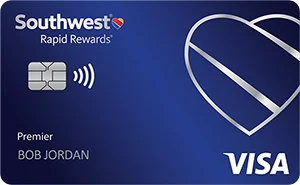
Annual Fee: $99
The Southwest Premier Card is one of three personal Southwest credit cards offered by Chase. This card is the mid-level one in terms of the annual fee. Note that you can only get one of the three at a time, and are only eligible for the bonus if you have not had another Southwest personal card bonus in the last 24 months.
The information for the Southwest Rapid Rewards Premier Credit Card has been collected independently by MileValue.com. The card details on this page have not been reviewed or provided by the card issuer.
3x
Earn 3x points on all Southwest® purchases
2x
Earn 2X points on local transit and commuting, including rideshare.
2x
Earn 2X points on internet, cable, and phone services; select streaming.
1x
Earn 1x points on all other purchases
The Southwest Priority Card is one of three personal Southwest credit cards offered by Chase. Note that you can only get one of the three at a time, and are only eligible for the bonus if you have not had another Southwest personal card bonus in the last 24 months.
3x
Earn 3x points on all Southwest® purchases
2x
Earn 2X points on local transit and commuting, including rideshare.
2x
Earn 2X points on internet, cable, and phone services; select streaming.
1x
Earn 1x points on all other purchases
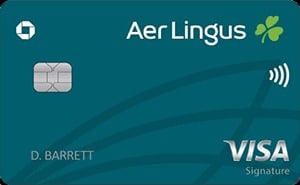
Annual Fee: $95
A typical airline co-brand card, but with a twist. Aer Lingus is an international carrier so the perks of this card won't be all that valuable to most U.S. residents. Note that the Avios used on this card can also be easily redeemed with British Airways and Iberia.
3x
Earn 3 Avios per $1 spent on purchases with Aer Lingus, British Airways, Iberia, and LEVEL
2x
Earn 2 Avios per $1 spent on hotel accommodations when purchased directly with the hotel. Plus earn 1 Avios per $1 spent on all other purchases.
1x
Earn 1 Avios per $1 spent on all other purchases.
The play with British Airways miles is to use them for short distance flights on American Airlines and other OneWorld carriers. British Airways uses a distance-based award chart, meaning you can find some flights for as little as 7,500 miles each way.
3x
Earn 3 Avios per $1 spent on purchases with British Airways, Aer Lingus, Iberia, and LEVEL.
2x
Earn 2 Avios per $1 spent on hotel accommodations when purchased directly with the hotel.
1x
Earn 1 Avios for every $1 spent on everything else.

Annual Fee: $95
This would be a typical airline co-brand card but the catch here is that it is associated with a foreign airline, so most people won't be able to take advantage of the usual perks such as free checked bags or priority boarding. Still worth grabbing at least for the bonus but the long term value might not stack up against other similar cards.
3x
Earn 3 Avios per $1 spent on purchases with Iberia, British Airways, Aer Lingus, and LEVEL.
2x
Earn 2 Avios per $1 spent on hotel accommodations when purchased directly with the hotel.
1x
Earn 1 Avios per $1 spent on all other purchases.
Chase Business Cards
Chase Ink Business Preferred® Credit Card earns the exact same Chase Ultimate Rewards points as the Chase Sapphire Preferred® Card and the Chase Sapphire Reserve®. It comes with a substantial bonus, the highest of all the UR cards. Ink Preferred is a business card, but you don’t need to own a “traditional business” to qualify for the card.
3x
Earn 3 points per $1 on the first $150,000 spent in combined purchases on travel, shipping purchases, Internet, cable and phone services, and on advertising purchases made with social media sites and search engines each account anniversary year.
1x
Earn 1 point per $1 on all other purchases, with no limit.
Ink Business Cash comes with a signup bonus that is marketed as “cash back”. Note that if you have another Chase Ultimate Rewards card you can combine these points to be used for travel.
5%
Earn 5% cash back on the first $25,000 spent in combined purchases at office supply stores and on internet, cable and phone services each account anniversary year.
2%
Earn 2% cash back on the first $25,000 spent in combined purchases at gas stations and restaurants each account anniversary year.
1%
Earn 1% cash back on all other purchases, with no limit on how much you can earn
Like the Ink Business Cash® Credit Card, the Ink Business Unlimited comes with a welcome bonus that is marketed as “cash back”. These points can be used for higher value travel redemptions if you have another Chase Ultimate Rewards card.
1.5%
Earn unlimited 1.5% cash back on every purchase
A cash back business card from Chase provides you the opportunity to earn cash back.
5%
Earn unlimited 5% cash back on travel purchased through Chase Travel℠
2.5%
Earn unlimited 2.5% cash back on purchases of $5,000 or more
2%
Earn 2% cash back on all other business purchases
If you frequently stay at IHG properties, this IHG Business card could be a great fit for you. It has a very reasonable annual fee of $99 and comes with valuable benefits, such as elite status and anniversary free night.
10x
Earn 10 points per $1 spent on purchases at IHG properties
5x
Earn 5 points per $1 spent on purchases on travel, hotels (non-IHG), gas stations, dining, social media and search engine advertising and office supply stores
3x
Earn 3 points per $1 spent on all other purchases
The Southwest Rapid Rewards Performance Business card is a great grab for anyone who can qualify. Note that this card does not currently exclude Southwest® Rapid Rewards® Premier Business Credit Card holders from getting it.
4x
Earn 4X points on Southwest® purchases.
3x
Earn 3X points on Rapid Rewards® hotel and car rental partners.
2x
Earn 2X points on social media and search engine advertising, internet, cable, and phone services and rideshare.
1x
1X points on all other purchases.
An excellent choice for business owners who frequently travel on Southwest. This card is often paired with one of the personal Southwest cards to earn the coveted Southwest Companion Pass.
3x
Earn 3X points on Southwest Airlines® purchases.
2x
Earn 2X points on Rapid Rewards® hotel and car rental partners and rideshare
1x
Earn 1x points on all other purchases
Overall a good option for business owners who are loyal to United Airlines thanks to a reasonable annual fee and great perks.
2x
miles on United® purchases, dining including eligible delivery services, at gas stations, office supply stores, and on local transit and commuting.
1x
mile on all other purchases. Plus, employee cards at no additional cost - miles earned from their purchases accrue in your account so you can earn rewards faster.
The Hyatt business credit card makes it debut, and allows business owners to earn a great return on their business spend, as well as a slightly easier path to earning Hyatt elite status. A unique feature of this card is the adaptive earning rate - you'll earn 2 Hyatt points per dollar of spend for your top three of eight spending categories each calendar quarter through Dec. 31, 2024, and top two of eight spending categories after that
9x
Up to 9 points total per $1 spent at Hyatt - 4 Bonus Points per $1 on qualified purchases at Hyatt hotels & up to 5 Base Points per $1 from Hyatt as a World of Hyatt member
2x
2 Bonus Points per $1 spent in your top three spend categories each quarter
2x
Fitness clubs and gym memberships
1x
Earn 1x point per dollar on all other spend.
U.S. Bank
U.S. Bank Personal Cards

A pretty basic no-fee card from U.S. Bank that earns points that can be used for cash back, gift cards, travel, and more.
4x
points on dining, takeout and restaurant delivery
2x
points on streaming services. Plus, a $15 credit for annual streaming purchases like Netflix, Hulu, Spotify®, Apple Music, Disney+, HBO Max and more!
2x
points at grocery stores, grocery delivery, gas stations, and EV charging stations
1x
cash back on all other eligible net purchases

A pretty good no annual fee travel card from U.S. Bank, the U.S. Bank Cash+™ Visa Signature® Card comes with a signup bonus that is worth $200 toward travel. This card offers 5% cash back on the first $2,000 in combined eligible purchases each quarter on two categories you choose.
5%
cash back on your first $2,000 in combined eligible purchases each quarter on two categories you choose.
5%
cash back on prepaid air, hotel and car reservations booked directly in the Rewards Center.
2%
cash back on one everyday category, like Gas Stations/EV Charging Stations, Grocery Stores or Restaurants.
1%
cash back on all other eligible purchases.

A very simple low intro APR card from U.S. Bank

Annual Fee: $95
Rates & FeesThis is a business card from U.S. Bank that provides decent rewards for a modest $95 annual fee (annual fee is waived for the first year).
You'll earn 2% back spend on purchases that are made in your top two categories of spend each month, and 1% back on all other purchases.
5%
Earn 5% cash back on prepaid hotels and car rentals booked directly in the Rewards Center.
2%
Earn 2% back that you spend on purchases made in the top two categories (from a list of 48) where your business spends the most.
1%
Earn 1% back on all of your other eligible purchases.
on usbank, U.S. Bank's secure site




